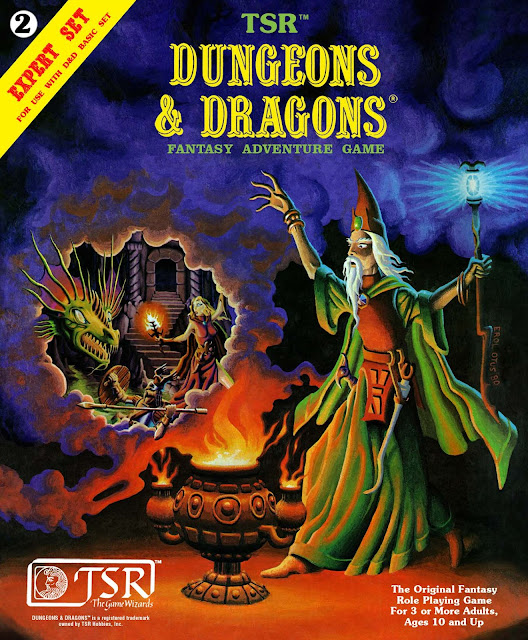But what lied beyond the levels 1-3 covered in the Basic Set? During the rather lengthy reign of the Holmes Basic Set, the official answer was Advanced Dungeons and Dragons. The Holmes Basic Rules were a simplified version of the Original Dungeons and Dragons game for new players. Once the players learned what a role playing game was with a few tabletop sessions, it was time to progress to the "full game". Original Dungeons and Dragons covered the higher levels but that game was becoming increasingly forgotten with each passing year. AD&D was a more expensive game to play with the three hardcover rulebooks and required converting characters to the advanced system and adapting to new mechanics. In part in order to keep players interested in D&D rather than to explore non-TSR games and in part to placate OD&D co-creator Dave Arneson's demands for royalties, TSR decided to expand the Basic Dungeons and Dragons ruleset.
Accompanying the new Basic Set from Moldvay was a new Expert Set with a Rulebook edited by David Cook with Steve Marsh. These covered character levels 4-14 and were intended to allow player characters to explore wilderness areas, fight on the seas and the skies and of course added new spells, monsters and magic items. In this blog entry we will examine the influence of these rules and how they cemented the B/X series as one of the most popular rulesets that have inspired present day Old School Renaissance games.


